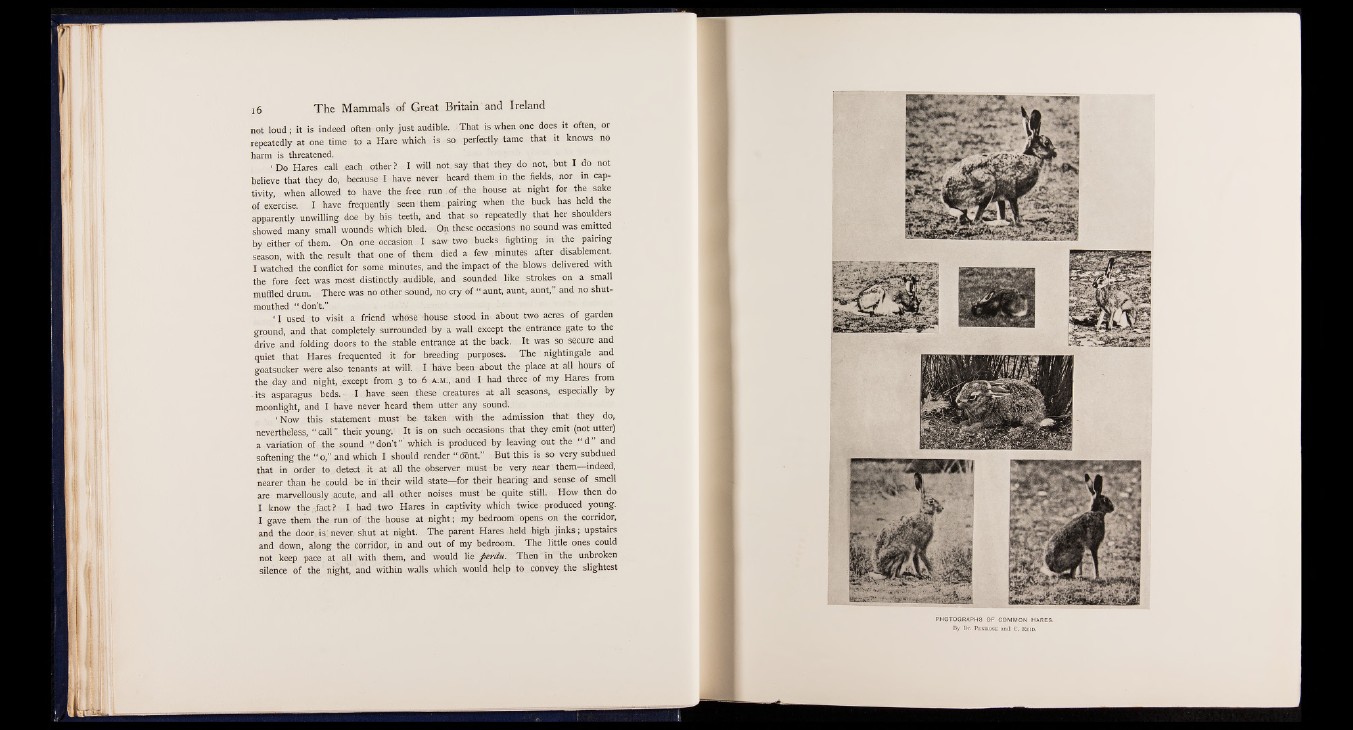
not loud; it is indeed often only just audible. That is when one does it often, or
repeatedly at one time to a Hare which is .s o perfectly tame that it knows no
harm is threatened.
‘ Do Hares call each, other? I will not.say that they do not,.but I do not
believe that they do, because; ! : havé never, heard them in the fields, nor in captivity,
when allowed to have the free, run .of. the house at night for the sake
of exercise. I have frequently; seen! them. pairing when the buck has held the
apparently unwilling, doe by his teeth, and that .so repeatedly that her shoulders
showed many small wounds which bled. On these.occasions no sound was emitted
by either of them. On one occasion I saw two bucks fighting in the pairing
season, with the. result that one of them died a few minutes after disablement,
I watched the conflict for some minutes, and the impact of the blows delivered with
the fore feet was most distinctly , audible, and sóünded like strokes on a small
muffled drum. There was no other sound, no cry of “ aunt, aunt, aunt,” and no shut-
mouthed “ don’t.” ,' / • ; 'i "••• r ---'i - '
‘ I used to visit a friend whose house stood in about two acres of garden
ground, and that completely surrounded by a wall except the entrance gate to the
drive and folding doors to the stable entrance at the back. It was so secure and
quiet that Hares frequented it for breeding purposes. The nightingale and
goatsucker were also tenants at will. I have been about the place at all hours of
the day and night, except from 3 to 6 a.m., and I had three of my Hares from
its asparagus beds. - I have. seen these creatures at all seasons, especially by
moonlight, and I have never heard them utter any sound.
‘ Now this statement - must be taken with the admission that they do,
nevertheless, “ cali” their young. It is . on such occasions that they emit (not utter)
a variation of the sound “ don’t ” which is produced by leaving out the “ d and
softening the “ o,” and which I should render “ oont.” But this is so very subdued
that in order to ^detect it at all the observer must be very near them— indeed,
nearer than he could be in their wild state— for their hearing and sense of smell
are marvellously acute, and all other noises must be quite still. How then do
I know the “fact ?. -;J had two Hares in captivity which twice , produced young.
I gave them the run of the house at night; my bedroom opens on the corridor,
and the door,is.never, shut at night. The parent Hares held high jinks; upstairs
and down, along the corridor, in and out of my bedroom. The little ones could
not keep pace at all with them, and would lie ficvdu. Then in the unbroken
silence of the night, and within walls which would help to convey the slightest
PHOTOGRAPHS OF COMMON HARES.
By Dr. Penrose and C. Reid.